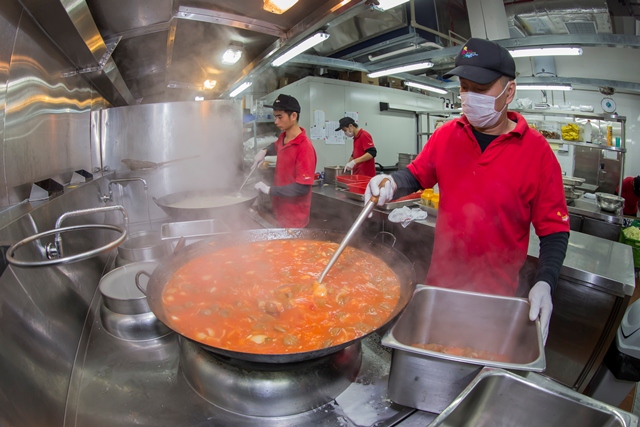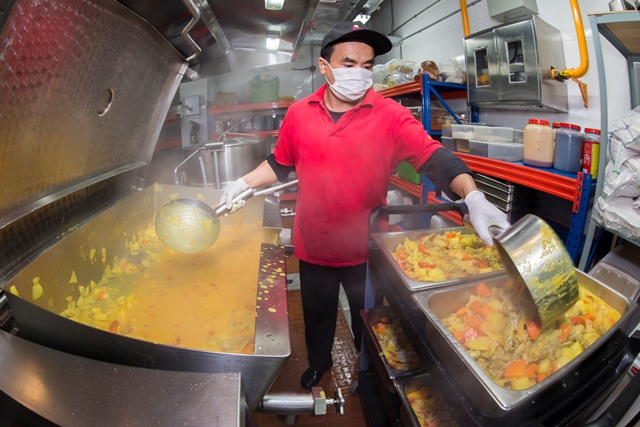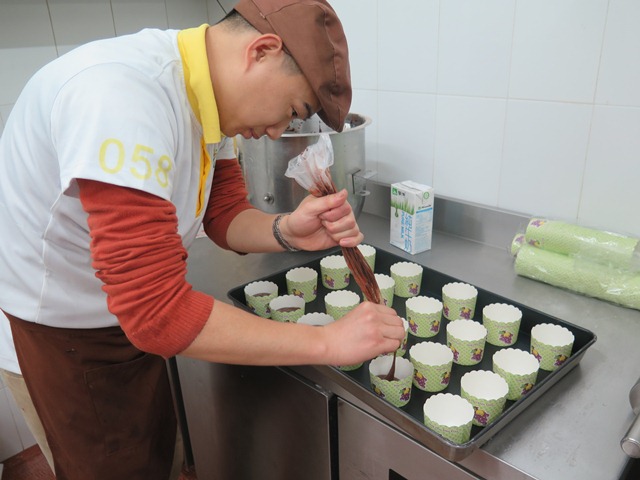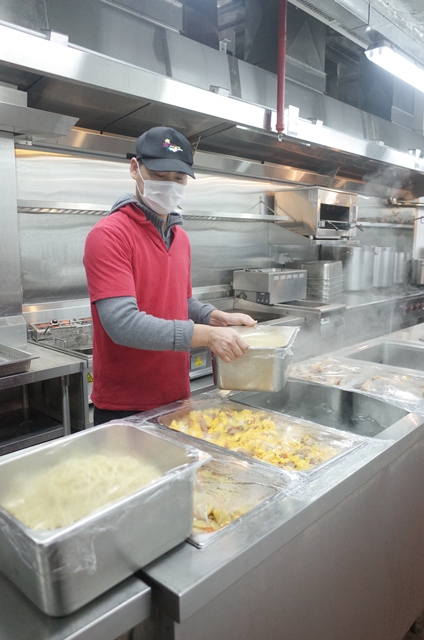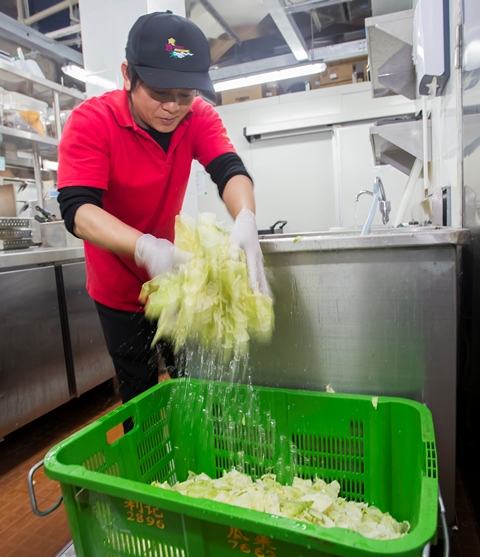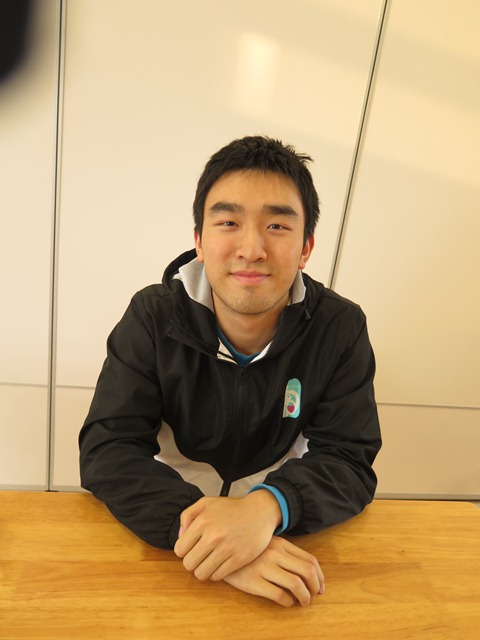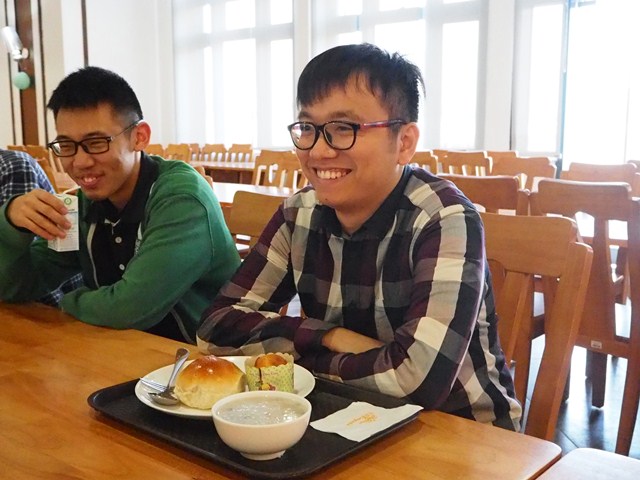Source: My UM
When it comes to the three daily meals, living in a residential college (RC) of fers the same advantage as living at home, where all you have to do is show up and eat whatever was lovingly prepared by your mom or dad, except that the dining hall in an RC offers the added advantage of providing an opportunity to socialise with your fellow students and teachers. While you don’t have to worry about the hassle of preparing food and doing the dishes, you might be curious to know who the chefs are and how they cook the three meals every day for so many students.
2 Suppliers to Take Care Of 8 RCs
Currently there are eight RCs at UM, with two suppliers taking care of the three daily meals of their members. A subsidiary of the Future Bright Group prepares food for Moon Chun Memorial
College, Choi Kai Yau College, Stanley Ho East Asia College, and Henry Fok Pearl Jubilee College, while the Guangzhou Yingyuan Catering Service Company Limited Macau Branch Office prepares food for Chao Kuang Piu College, Lui Che Woo College, Cheng Yu Tung College, and Shiu Pong College. Terry Lam, functional head of the Campus Services Section (CS), Campus Management Office, says, ‘Our main considerations when selecting the suppliers are their capability and experience, because we wanted to ensure food quality.’ (continue reading on page 2 & 3)
All Food Prepared in Suppliers’ Own Kitchens
The dining hall and kitchen in every RC have been designed according to the same standards except for the size, which varies from RC to RC. For example, the kitchen in Lui Che Woo College is not as big as the kitchen in the Stanley Ho East Asia College. The kitchen in the former college can only hold two big woks, which means the chefs are extremely busy during peak periods.‘Everything we serve in the RCs is made in our own kitchens, including the westernstyle main dishes and desserts for the High Table Dinners,’ says Li Wenjian, manager of the Macao branch of the Guangzhou Yingyuan Catering Service Company Limited. ‘Everything is made according to food safety standards. There is no ready-to-eat food sourced from outside the campus.’ This emphasis on preparing everything in their own kitchen is echoed by Kenneth Yu, catering manager of the Future Bright Group’s subsidiary. ‘Everything we serve in the four RCs in our char ge is made in our own kitchens except for the steamed buns and the like, which are from the restaurants under the Future Bright Group,’ Kenneth Yu says. ‘All the raw materials are examined by the local food safety authorities to ensure quality.’
Catering to Different Tastes
All the RCs provide a variety of food choices, hoping that the students can eat a healthy, well balanced diet according to the food pyramid. ‘A dining hall is not like a restaurant,’ says Iu Vai
Pan, master of the Stanley Ho East Asia College. ‘We hope our students can think of eating in the college as eating at home. You won’t necessarily like everything your mom cooks, but you know home-cooked meals are healthier, with less salt and no MSG.’
If it’s hard enough to cater to the different tastes of members of a household, imagine how much harder it would be to cater to the different tastes of the more than 3,000 students in the eight RCs.‘Local students prefer lightly-flavoured foods, while some students from mainland China like it spicy or salty ,’ Kenneth Yu says. ‘So what we do is we make mostly lightly-flavoured food, but also provide soy sauce or chili sauce so those who prefer strongly-flavoured food can add the condiments according to their preferences.’ After a semester of trial and error and collecting feedback from the students, the two suppliers have either reduced the frequency of those items that didn’ t sit well with the majority of the students, or removed them from the menu altogether . At the same time, popular dishes are served more frequently. Now both suppliers make a point of rotating their menus on a regular basis.
Washing 300kg of Vegetables Daily
What the students care about most, in addition to variety and taste, are the hygiene conditions of food preparation premises and eating utensils. According to our journalist’s observation, every kitchen has several cleaning workers. They will first manually wash the eating utensils, and then put them in the dishwasher for disinfection. After that they will place the utensils in a disinfection unit and will only get them out and put on the countertop at meal times. ‘Every kitchen needs to clean about 300 kilograms of vegetables every day, which is mostly done during the break between breakfast and lunch, from 9:00am to 1 1:00am,’ Kenneth Yu says. ‘Our cleaning workers will put all the vegetables in a big colander, add some salt, and then rinse them with water . Heavy stuff like dirt will sink to the bottom, while light stuff such as small insects and plastic foam, will rise to the surface. This is a common practice of washing vegetables, which is widely adopted by the industry. Also we always prepare cooked food and raw food separately.’
Food Committee Collects Feedback
Every RC has a food committee. If RC members have any suggestions about the food, they can raise their suggestions to the supplier through a student representative. Zeng In Son from the Department of Mathematics, Faculty of Science and Technology, is a representative of Lui Che Woo College (LCWC). ‘We conduct a survey once a week to collect students’ suggestions,’ he says.
Student Feedback
‘Food quality is a bit erratic, but it’s always nutritious, which is what really matters,’ says Ao Ieong Lai Tong, a first-year student from the Department of Chinese, who is also a member of LCWC.
‘Food quality is okay. Food hygiene is also good,’ says Ke Chengkai, a first-year student from the Department of Chinese, who is also a member of LCWC. ‘I hope the supplier can provide more varieties.’
‘Food quality and variety have improved compared to the last se mester,’ says Wu Chenglin, a first-year student from the Department of Sociology, who is also a member of the Stanley Ho East Asia College. ‘The new self-service style for getting rice is good. It takes a bit longer, but students can decide how much to take according to their appetites to reduce food wastage. I hope the supplier can prolong breakfast service by half an hour.’

